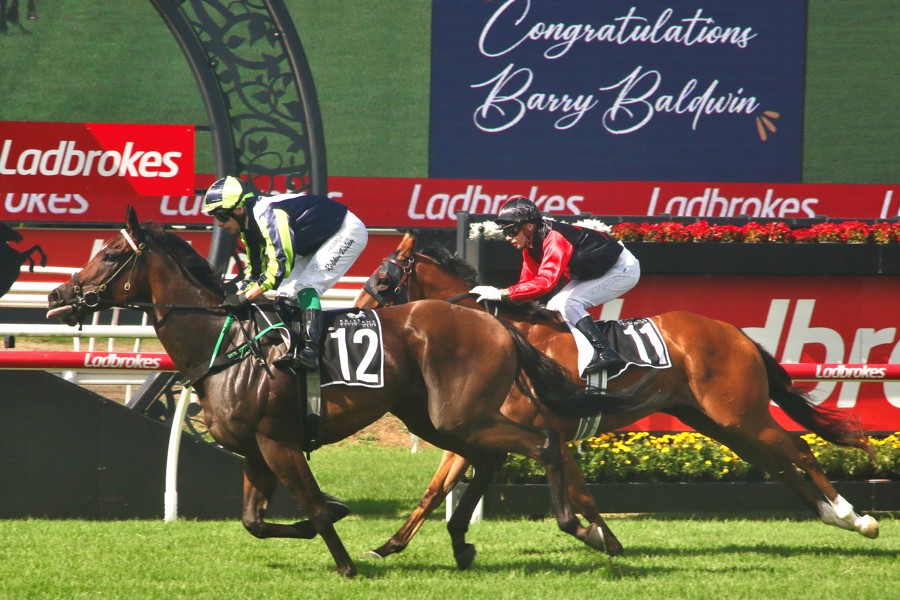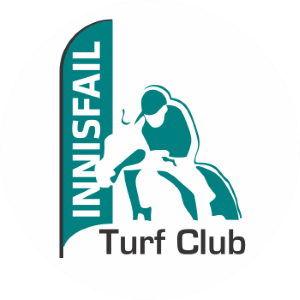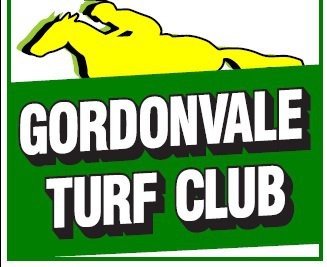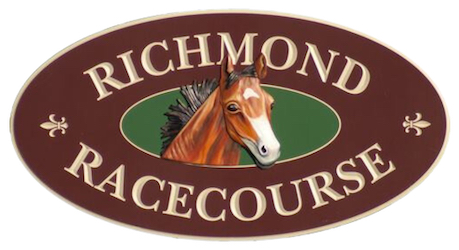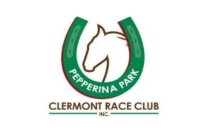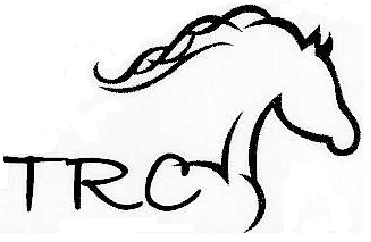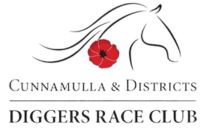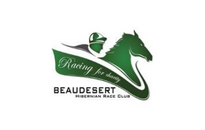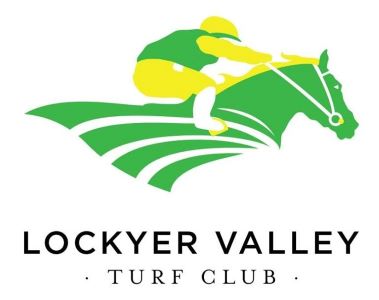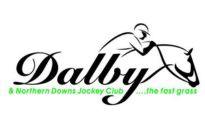
Tales Of The Past: Barry Baldwin
By Ross Stanley
The widely travelled horseman overcame the odds, earning Group 1 glory, premierships and respect.
“It was good that Mr Klibbe taught me about honesty,” said Barry Baldwin in reference to the police officer who was his foster parent for his six years as a ward of the state.
During that period he was enrolled at Brisbane’s Morningside State School, the last of more than 20 primary schools he attended.
Barry, who was born on September 14, 1943, was the youngest of Daniel and Joyce Baldwin’s five children.
Much of the childhood chapter for Danny, Faith, Pam, Trevor and Barry was fragmented and itinerant. Their existence took forms that ranged from a nuclear family unit to two or three split segments.
Barry was in the care of his father at Aberdeen in the Upper Hunter when his brother, Trevor, succumbed to a fatal dose of tetanus. The disease was inflicted by a nail from a wooden butter box the 10-year -old was breaking up for firewood.
By this time, the eldest boy, Danny, was a useful asset on a farm run by Joyce’s brother, Percy, and his wife, Cecilia.
Faith and Pam, who had always been with their mother, were destined for successful careers respectively in nursing and retailing. Barry moved on to Morningside.
Daniel Harold Baldwin first saw light of day at Wanganui in New Zealand on November 7, 1908.
His kids were regularly on the move as he chased work in two states. He was employed as a gardener, railway fettler, and a cane cutter to name but a few. He enlisted in the army in Worl War II and he was a live-in groundsman-caretaker at Craigston Apartments, a block in Wickham Terrace where his children could not be accommodated.
Baldwin drowned in the Brisbane River on May 23, 1956 - his daughter Faith’s 17th birthday.
The life of Joyce Thelma Baldwin (nee Littleton) spanned from 1918 to 1997.
Her grandfather, John Thomas Littleton, was the Cornish emigrant who became known as the “Father of Crows Nest”. The spot near Toowoomba kicked off as a little Cornwall with seven of its first 14 settlers hailing from England’s southernmost county.
Barry’s Morningside sojourn did embrace a variety of positive experiences. He fondly remembers barging his way to scoring two rugby league tries at school and learning about horses from the stockmen at the nearby Cannon Hill Sales Yard. His introduction to a greyhound added to his passion for animals.
Faith recalls that when Barry was very young he loved nursing a bantam. At one point there was a pony called Kewpie that was a handy means of transport.
The downside was his self-admitted rebellious outlook. He felt the cane repeatedly. On one particular day he was dealt three servings of multiple hits.
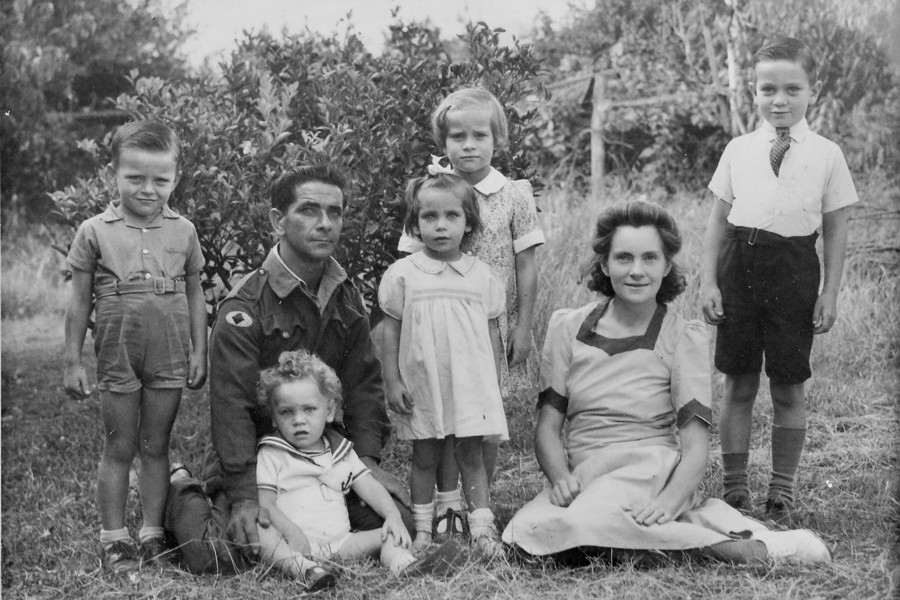
THE WORKING LIFE
The Baldwin children did not go to secondary school.
At age 14 and for £7 per week, Barry joined the workforce at the bacon factory at Doboy, an area adjacent to Morningside. The KR Darling Downs business, named for its principals William Krimmer and Harold Reed, was directly across the Brisbane River from the scene of Barry’s supreme racing thrill a half-a-century later.
The hobbies for Krimmer, who started off in Toowoomba, centred around show horses and thoroughbreds. He passed away in 1944, three years before Highstrung, a horse that he bred, won the Doomben 10,000.
Barry’s next role, with a weekly wage of 10 shillings, was that of a stablehand at Jack Clayton’s yard. His first assignment was as a raceday strapper was at Eagle Farm in 1958.
He was then similarly occupied with Mal Barnes at Nudgee Beach. Next up, Faith’s husband, Col Whear, helped him get another horse-handling post at Alby Pratt’s stables.
Barry was then granted an apprenticeship with Gordon Franks, a former North Queenslander who provided lengthy service as president to the Owners and Trainers Association.
Baldwin was soon too heavy for the Brisbane area, so he went west where there was a higher weight scale.
BUSH BEGINNING
Baldwin told Grantlee Kieza (Courier Mail, April 19, 2020) that Joe Farndon, his new master in Roma, was caught ringing in a horse in England “but got a Queen’s Pardon to train again”.
“I rode four winners one day at Surat. Unfortunately, I wasn’t meant to win on one of the horses,” he said.
“I kicked my foot out of the stirrup iron near the finish, but the horse still won.
“When I came back, Mr Farndon was really angry. I said ‘I’m sorry boss’. He looked at me and said ‘You’re still on the thing!’.
“He’d wanted me to fall off, but the horse was going too fast.”
As Barry had moderate success in the saddle, he needed to follow a new pathway. He spent a few testing months clearing land with a Department of Main Roads surveying party based at Quilpie. That chore was followed by an interval with trainer Randall Ferrier back at Roma.
Baldwin was out of his teens when he secured the foreman’s job at the Brisbane yard of Tony Mazzaglia, the master at the time of the talented apprentices Kerry Smith and Tony Erhart. The latter was Barry’s best man when he wed Margaret just over 50 years ago.
There was a shortage of trainers in Roma. Baldwin answered the call and was initially domiciled with Archie McCallum.
His first licence was for the picnic races. These events were challenging because candidates had to be “grass fed” in set paddocks and not “corn fed” for a designated period. It was for one month (but later it became two) with three weeks back to get them fit.
The meetings were for two days and most horses ran on both days. Baldwin had about nine hopefuls on his first day at Roma and was left despondent. He must have been doing something right because the result on the following day was a couple of wins and a handful of placings.
Barry had little choice but to take up shoeing, a practice he maintained for a long time. In short, it was a rich learning curve. He also varied his steeds’ routines by riding them out on back lanes past cattle.
After progressing to a full licence, Barry flourished. Graham Dawson (Turf Monthly, January 1985) indicated that “Baldwin, at age 32, swept up the whole program at Roma on 9 April 1977 with Bamboo Bill, Ballanjui, Hailmid, Todbrio and Aztec Gem”.
“Brisbane racing historian, the late Jim McGill, believed Baldwin’s feat was the first time a trainer had won the card at a registered meeting in Queensland.”
Another positive of his 16 years at Roma was a successful linkage with jockey Ken Waller, a relationship that was to be long lasting.
Barry also pursued his interest in rugby league. He was a mate of Ray Higgs and also knew Wally Fullerton-Smith. The duo went on to wear State of Origin and Australian jerseys.
The premier trainer went through the frustration of developing smart performers who were shifted on because they were good enough to achieve in stronger than country company.
The chief example was the King Star gelding Veil Kingdom. The horse with a staying endowment from Brimstone on the maternal side was unraced at two. His eight wins at three were scored at the likes of Mitchell, Wandoan, Roma and Injune. Four more came the following season and it was no surprise that he proceeded to Norm McCallum’s barn at Toowoomba.
From there, Veil Kingdom won the 1975 Queensland Cup, 1976 Prime Minister’s Cup and a QTC Winston Churchill Stakes. His third in the 1976 O’Shea Stakes behind Balmerino and Participator was a measure of his class.
Around the time of the loss of Veil Kingdom, Baldwin had a trackwork accident while partnering one of his team. He incurred lumbar damage and was hospitalised for six weeks.
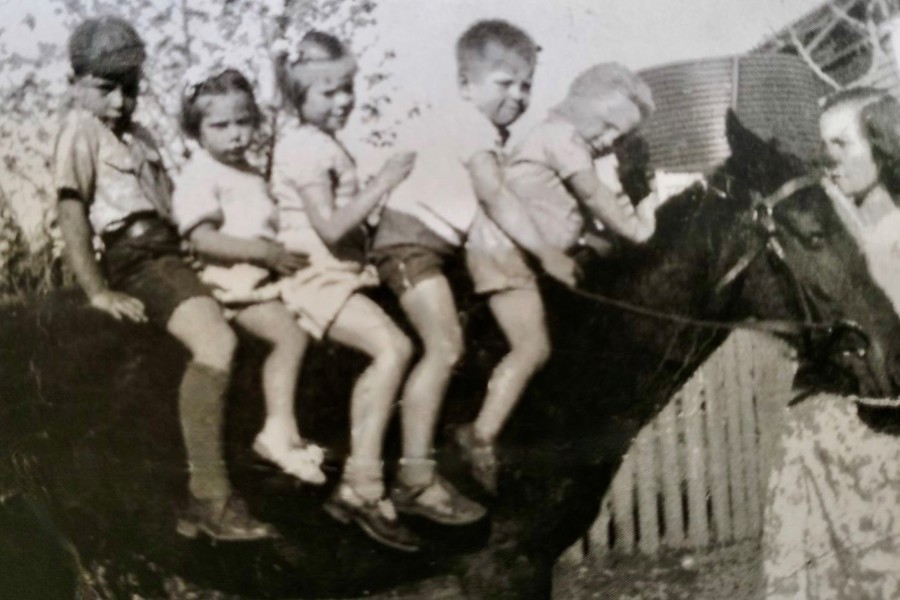
A MOVE EASTWARDS
Toowoomba trainer Jim Atkins was also a beneficiary of Baldwin’s graduates. A particular instance was Indian Line, his 1980 Queensland Oaks runner-up.
Atkins generously penned a letter to Barry. It not only recommended that he relocate to Toowoomba but it also offered his assistance.
In 1981, spurred on by the potential of the Grand Chaudiere gelding Daldiere, Baldwin opted for the Garden City move.
Daldiere’s seven victories included the 1985 Rockhampton Cup and hits at Eagle Farm, Doomben and Ipswich. He was a real money spinner for the “Romans” Des Nolan and John Waterworth.
Another feature win in the early 1980s was chalked up by Red Mountain, a gelding by Good Times Coming from Fujiyama. The chestnut was bred by Blackall identity Gordon Prow.
Two starts previous to the QTC Defence Force Cup (1850m) success, champion English hoop Lester Piggott had set the well-backed commodity alight far too early.
For the Cup, apprentice Paul Hamblin followed Baldwin’s direction to sit quietly until 600 out. He then turned up the speed and the lightweight saluted at 14/1.
Baldwin put the early polish on a promising Grand Chaudiere colt called Beelbangera. As he a juvenile, he claimed the scalps of the future Group 1 winners Tristram’s Edition and Just Now.
After Sydney trainer T J Smith acquired him, he grabbed the STC Neville Sellwood Stakes. In the 1985 Perth Carnival, he took out the Blue Ribbon Quality (Group 3, 1800m) and was runner-up in tight finishes to Rant and Rave in the West Australian and Starjo in the WATC Australian Derby.
In 1991, Barry combined with Shane Shield to collect the Toowoomba Cup with Mister Morris.
Meg’s Ego was a smart contender. He ran third, beaten a half-head by a head by Barrosa Boy and Rough Habit, in the 1992 Doomben 10,000. Twelve months later Sharivari’s son filled the same slot in the same event in a home state trifecta behind Unequalled and Buck’s Pride.
Meg’s Ego’s fourth in Rough Habit’s 1992 Stradbroke Baldwin demonstrated Barry’s ability to get his aspirant to peak for targeted races.
The suitably named Baggio confirmed that skill. The grey by Roman Prince from See My Style failed by a long neck to net the 1994 Stradbroke.
Roberto Baggio was a revered, royal figure who potted 27 goals from 56 appearances for Italy. His nickname was Il Divin Codino. It means the “Divine Ponytail” in reference to his distinctive hair style.
Seemingly the horse’s public debut was less than desirable. He apparently kicked a yearling sales’ onlooker, putting them in hospital.
Baggio, after having lost his rider in the Doomben 10,000, was outpaced and rearward early in the Stradbroke. He did not get clear until well inside the 200m mark and only just missed catching All Our Mob.
Earlier in 1992, Baggio scored at Newcastle and Gosford prior to a sound third in the Hawkesbury Guineas and a slim loss in the Queensland Guineas. After prevailing in the Lord Mayor’s Cup, he was a close third in the Brisbane Handicap prior to annexing the Recognition Stakes.
He was a Canterbury winner and a Rosehill placegetter in the spring of 1992.
The Harbour City was also the setting for misadventure. When Baggio was taken to the beach, he took off swimming and was recaptured safely after covering around two kilometres.
The often belligerent Baggio did respond well to the track rider Paul Hamblin.
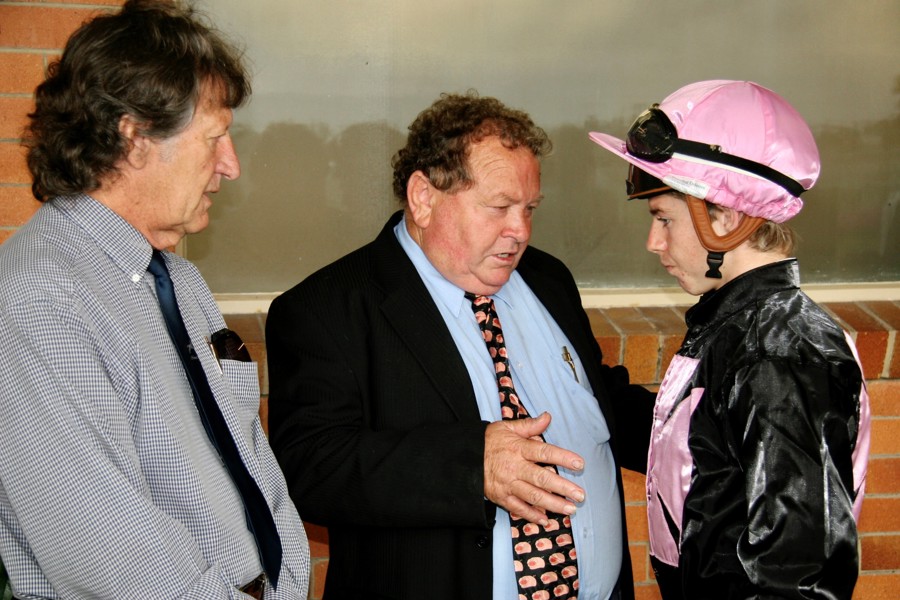
THE BIG SMOKE
After being a leading trainer in Roma and Toowoomba, Baldwin made his debut in the ranks of Brisbane’s top 10 trainers in the 1991-92 season. He was third on the ladder in 1993-94 with two wins more than Atkins.
In November 1994, Barry shifted his string to the Hendra stables at Lilley Street that were made famous by Athol Strong and his family.
The wheels fell off the trio that were to be his spearhead. Meg’s Ego died, Baggio went amiss and the nine-times winning short-courser Hell’s County consumed a poisonous weed and never recovered his form.
After keeping the wolf from the door, Baldwin tinkered with his approach so his squad could adapt to the hotter conditions in the capital.
At the end of the 1997-98 racing year, Barry Baldwin was Brisbane’s premier trainer with 40 wins. He held the John Hawkes juggernaut at bay by a single win with Alan Bailey a mere half-win astern on the third rung.
Stakeswinners that closed off the decade included Dual Scope (1997 Brisbane Handicap), Gentle Wind (1998 Toowoomba Cup), Fine Action (1999 BTC Golden Stakes) and Roulette (1999 GCTC Goldmarket, QTC Sir Byrne Hart Stakes).
Early in the new century, Arimathea (Michael Cahill) banked the 2000 Magic Million Cup’s first prize of $285,000. All up, the Zoffany gelding that was second in the 1999 Queensland Guineas earnt $440,000.
A BOLD MOVE NORTH
Baldwin took up an invitation to operate in Macau in 2001. He was provided with an assistant and began with three hopefuls.
His second representative got up at 33/1. The Asians took heed and his numbers climbed to the maximum of 60. In his first full year, the stable turned out around 100 winners. Their income was apparently worth A$5 million.
Expatriate jockey Brent Thomson encouraged Barry to follow his instinct. Instead of having his side sprint up after a lap of pacework as the locals did, he opted to improve fitness by making it two rather than a single circuit.
Barry's method worked. Another art the Queenslander developed was backing off with his horses. They did not go for outside spells. The plan also helped with class system.
Barry Baldwin teamed up productively with jockeys Jim Byrne, Michael Cahill and Ken Waller. The former booted home a quadrella for the side in January 2002 on his second day in Macau.
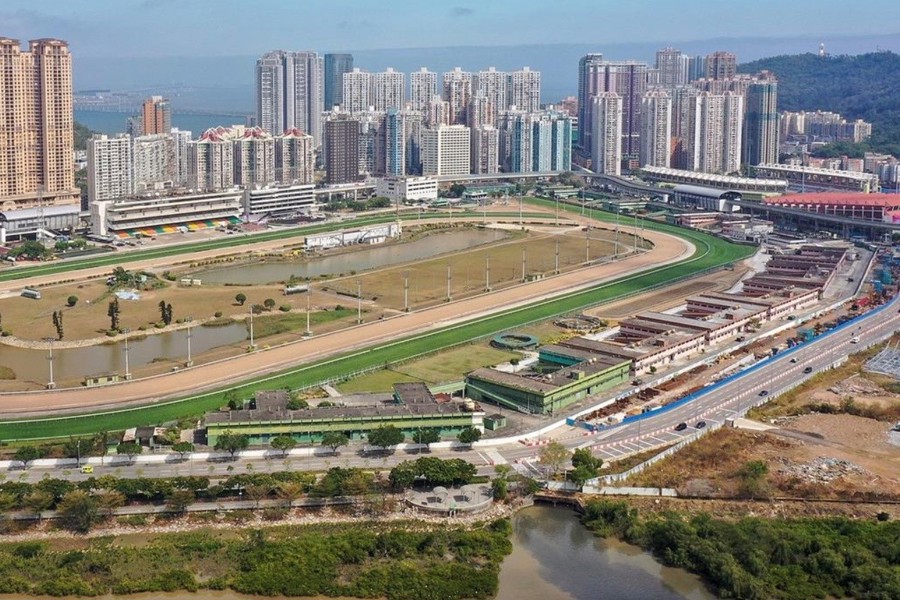
THE RED LETTER OCCASION
When Baldwin came back to Brisbane in 2005 from Macau, his win tally was 247 victories. The venture had been highly profitable.
He soon had 29 gallopers on his books. The fact that they were all raced by previous clients was testimony to the regard they had for him.
There was a juvenile filly that shed her maiden tag at Caloundra with Cahill aboard on June 5, 2005.
Baldwin would have been glad he came home when he did. The promising daughter of Monashee Mountain was having her second outing.
La Montagna, the Italian term for mountain, was bred and raced by David and Sally Laing, Greg and Louise Hallam, Enid Jackson and Anne Cullinan. The group owned the bay’s dam Millennial, a dual winner from just 14 appearances.
The two wins at two were followed by five at three. The first four were a Class 6 Handicap, Vo Rogue Plate, the Listed Bright Shadow Stakes and the Group 3 BTC Classic.She then finished midfield in the Doomben 10,000 after being 17th of 19 approaching the final turn.
As an $11 chance, she then faced her Everest in the shape of the 2007 Stradbroke. The three-year-old peaked in the suitably soft ground, flying home from well back for Craig Newitt.
Hallam’s post comment to the Sun Herald was that he “had horses with Baldwin for 25 years.
“Barry Baldwin is a champion bloke. He is the most delightful guy, a master horseman. He is not one of those slick marketeers. There is nothing he doesn’t know about racehorses.”
Although La Montagna only subsequent placing was her second in the Missile Stakes in Sydney, she was an Equine Influenza sufferer.
The millionairess added value for her owners when she was sold in foal to Haradasun to Nathan Tinkler for $475,000 in 2009.
Three of La Montagna’s foals died after birthing. Her full sister, Paramount, produced the MVRC Red Anchor Stakes hero Epitmum.
Rum Dum won the Lord Mayor’s Cup in May 2008. On July 31 that year, Baldwin clinched his second Brisbane trainer’s title, courtesy of 41 first placegetters to Robert Heathcote’s 32 and Brian Guy’s 22.
In 2009, Burdekin Blues, co-owned by Ingham cattleman Tom Sheahan, took out the STC Expressway Stakes and the VRC Century Stakes on Melbourne Cup day.
The Sequalo-Winsome Blue sprinter that grossed almost $680,000 was a selection by Barry that cost just $32,000.
Bart Sinclair (Sunday Mail, September 6, 2009) wrote that “Trainer Barry Baldwin spent Thursday and Friday nights in his car outside Burdekin Blues’ stable”.
“He had done all the planning and executed his preparation for the George Moore Stakes to the letter.
“But with all the hype about Burdekin Blues, Baldwin just wanted to ensure there was no door left ajar for some no-gooder to interfere with the star sprinter.
“He didn’t have any signal there was something sinister afoot but he just wanted to make sure that foul play was ruled out of contention.
“Hard work and Baldwin have been travelling companions throughout his career and it’s great to see someone with his work ethic getting great rewards.”
The success was also due to tactics. When failed in the Newmarket, his natural speed had not be let flow in the early stages. That error was not repeated.
Although Burdekin Blues had various niggling issues during his career, he successfully backed up the following week in the GCTC Bat Out Of Hell Stakes with 61kg.
Rightson was another black-type winner for Baldwin and Brad Stewart in the 2010 Brisbane Handicap.
A real pin up emerged in the form of The Candy Man. The milky grey shattered his jaw when he was strung up in his box in 2016.
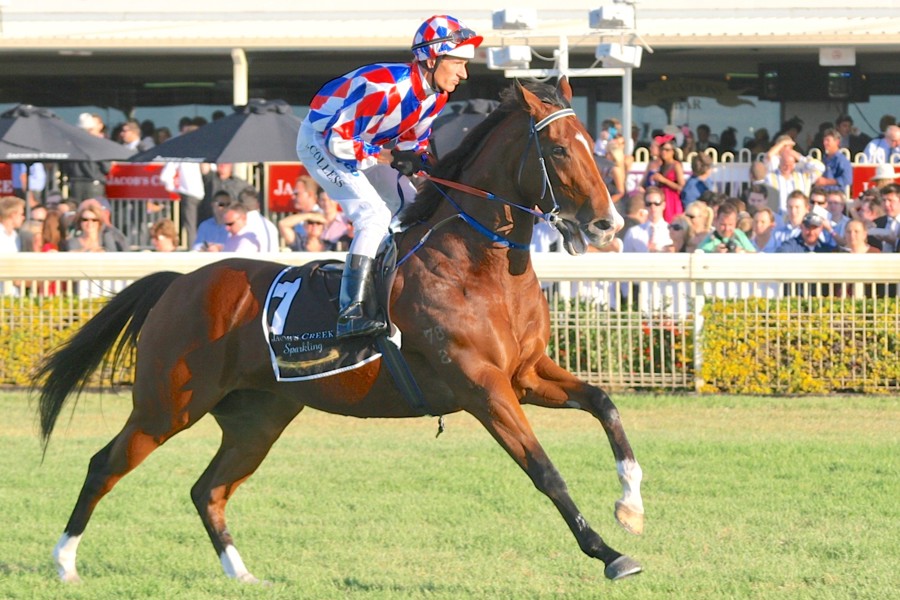
The $26,000 buy was uninsured and had not yet earnt a cent. The estimated cost to save his life was upwards of $50,000.
Principal owner Angelo “Lucky” Pippos humanely took the punt. A 10-hour surgical operation at the Gatton Veterinary Hospital involving seven steel plates and 56 screws did the trick.
Before the accident, The Candy Man ran fifth at $26 on debut at the Sunshine Coast in May 2016. Post recuperation, his next run was at the same track in November 2018 when he was third, going down by a head.
After another placing, the remarkable performer won seven straight. He really did thank his lifesaver by compiling and overall formline of 34:11-2-3 for a return of $553,675.
The highlight of the sequence was the 2019 Group 3 Premier’s Cup for Michael Cahill. Brad Stewart was the partner for three of his remaining wins with Matthew McIllivray chipping in with the Mooloolaba Cup.
Noticeably, The Candy Man failed to fire away from home in nine southern assignments.
The name was derived from his parents Casino Prince and Melody. There was a flexible social and vocal group called The Rat Pack that performed in Las Vegas casinos. Frank Sinatra and Sammy Davis Junior who sang The Candy Man song were members.
Former jockey Cassie Lee Schmidt-Rolls has given the survivor with the nickname Frankie a further lease on life in the show ring.
Meanwhile Baldwin, the octogenarian who was a former president of the Australian Trainers Association’s Queensland division, did not retire last November because of his age.
His numbers had dwindled to the extent that 15 boxes in the infield at Eagle Farm was financially unviable. Fortunately the knockabout bloke that prepared in excess of 2000 winners in Australia and Macau is not lost to the industry as he has will play the part of a consultant for trainer Chris Anderson.
On January 20, 2024, the Brisbane Racing Club recognised Barry Baldwin’s wonderful contribution to the turf by naming an Eagle Farm race in his honour.
“Lucky” Pippos, who was very supportive of the gesture, recommended that Substantiate, a Sydney performer he part-owned, have a crack at the contest.
It was a superbly fitting climax because the Peter and Paul Snowden-trained conveyance comfortably got the chocolates. Rider Robbie Dolan sported The Candy Man’s purple and white livery.
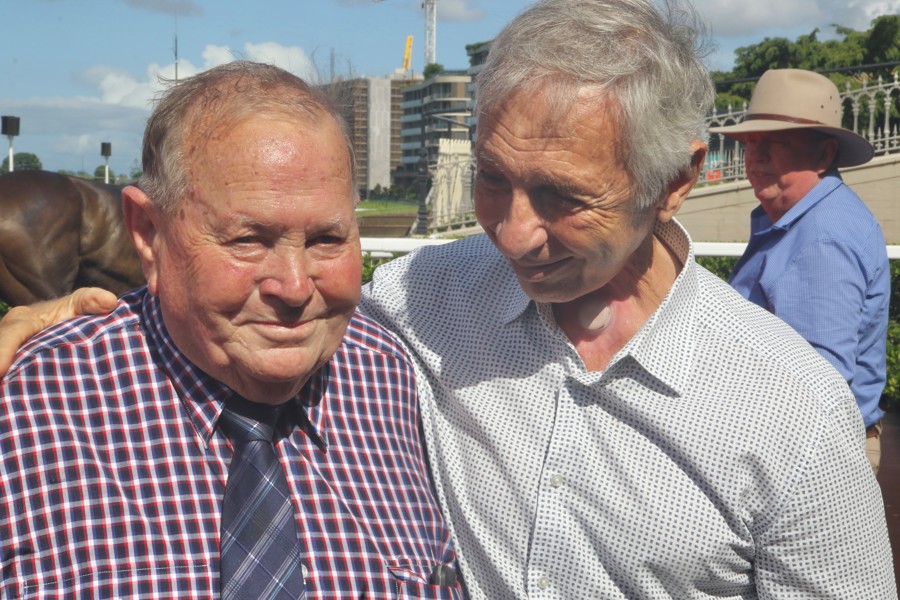
THE CHARACTERISTICS
Some points and comments made by the fraternity that surfaced about Barry Baldwin merit a revisit:
- He rarely bought above the $100,000 mark. One of things he looked for was a kind eye.
- His bush remedies embraced careful use of garlic and the natural immune system booster, the vitamin C tonic.
- He kept the carrots and attention up to his bloodstock in the confines of their boxes in Macau.
- He did have an affinity with animals. When he was a junior, there was a wild one in the Franks’ team that he was able to turn around.
- Finally, Barry himself: "The horse always comes first. I don’t think my wife Margaret will agree!"
It is also worth recalling that the Golden Glove Champion at Morningside school refused to fight Barry.
“I will end up killing him. I knocked him down three or four times but he kept on getting up,” he said.
Baldwin was not born with a silver spoon nor handed a silver bridle. The tough and tenacious early fossicking eventually yielded gold. He certainly made a habit of bringing home the bacon for his clientele.
